Plant 2 Primary photosenstizer, Hemolysis, Hemostasis
1/68
There's no tags or description
Looks like no tags are added yet.
Name | Mastery | Learn | Test | Matching | Spaced |
|---|
No study sessions yet.
69 Terms
Hypericum perforatum
St. Johnswort, Klamath weed, goatweed
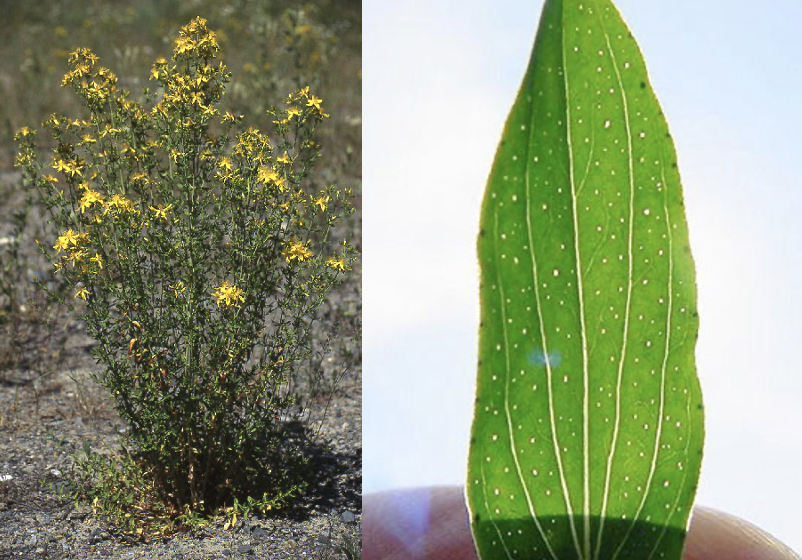
True or False? St. Johnswort is a very common weed throughout the PNW so it often causes issues
False. St. Johnswort is a very common weed throughout the PNW.but it RARELY causes issues becuase it not very palatable
What is the toxic principle and MoA of Hypericum perforatum?
primary photodynamic pigment, hypericin, reaches cutaenous circulation where reacts with oxygen and sunlight to cause inflammation
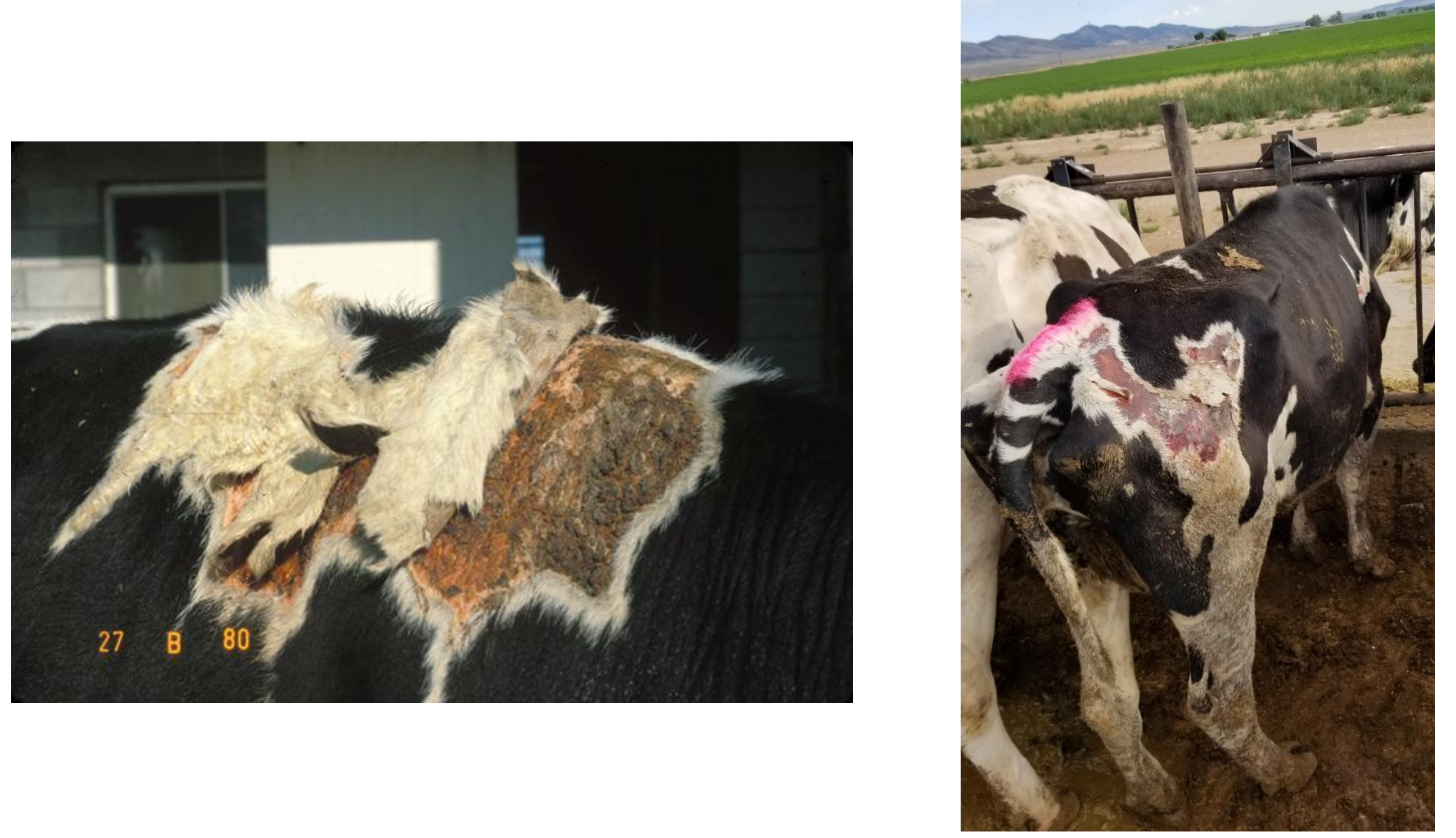
Hypericum perforatum toxicosis occurs at ___% of BW requiring a little/a lot of plant material.
1-5%, requires a lot of plant material
What animals are affected by Hypericum perforatum?
any grazing animal
What lesions are seen with Hypericum perforatum toxicity?
lesions restricted to nonpigmented areas, including cornea and conjunctiva with varying degrees of inflammation within 24 hours of ingestion
How do you treat and control Hypericum perforatum toxicity?
avoid plant and keep animals out of sunlight
abx, anti-inflammatories like corticosteroids, warm soaks
In humans, hyperforin from Hypericum perforatum is a potent inhibitor of ___,___,___,____, and can interfere with over __ drug metabolism/excretion.
serotonin, dopamine, noradrenaline, GABA (no more effective than placebo for treatment of moderate-severe major depression)
50
What are examples of Allium spp.
onions, garlic, chives, scallions, leeks, shallots, etc

What plant can be confused with wild allium species?
death camas
There are both ___ and ___ varities of allium species
cultivated, wild
What are the toxic principles in allium spp.? Where do you find them?
disulfides, sulfoxides, highest concentration in bulb
Disfulfides and sulfoxides are ____ ____ agents so can cause what type of anemia?
potent oxidizing,
Heinz body hemolytic anemia
__probably have twice the risk for oxidant injury with allium spp. vs. what species?
cats, dogs
What is the rule of thumb regarding how toxic an allium form is?
the stronger the smell, the more toxic
True or False? Onions are 3-5x more toxic than garlic.
False. Garlic is 3-5x more toxic than onions
True or False? Dried onion and garlic products are much more concentrated and toxic compared to fresh.
True
There is a large range of toxic doses for onions because it depends on ___.
form: cooked, fresh, dried are all a risk
What animals are most sensitive and most resistant to allium spp.?
Most sensitive: cattle, cats
Most resistant: sheep, goats, humans
The onset of clinical signs is faster with onions/garlic?
The onset of clinical signs is faster with onions (garlic is slower)
What are some clinical signs of allium spp. toxicity?
acute onset within few days, peak at 3-5 days
icterus, dyspnea, weakness, collapse, abortions due to hypoxia in cows
What lab abnormalities are seen with allium spp.?
Heinz body formation (within 24-48h)
Hemolysis (within 3-5d), anemia, hemoglobinemia/uria, methemoglobinemia, jaundice
What secondary changes are seen on necropsy with allium spp.?
hemoglobinuric (hypoxic) nephrosis, centrilobular necrosis
With allium spp. exposures in companion animals, what and when should you be monitoring?
PCV and blood smear at baseline, day 2-3, day 5 (garlic may require longer monitoring)
What is the treatment for allium spp.?
remove source, DO MATH, bathe, emesis, AC, monitor CBC, IV or SQ fluids, transfusion if hemolysis
What is the prognosis for allium spp.?
Good, if not moribund
__can tolerate onions at 100% of diet for periods of time, with transient effects. There are recommendations on how much can go into __ feed
sheep, ruminant
Acer spp.
maple
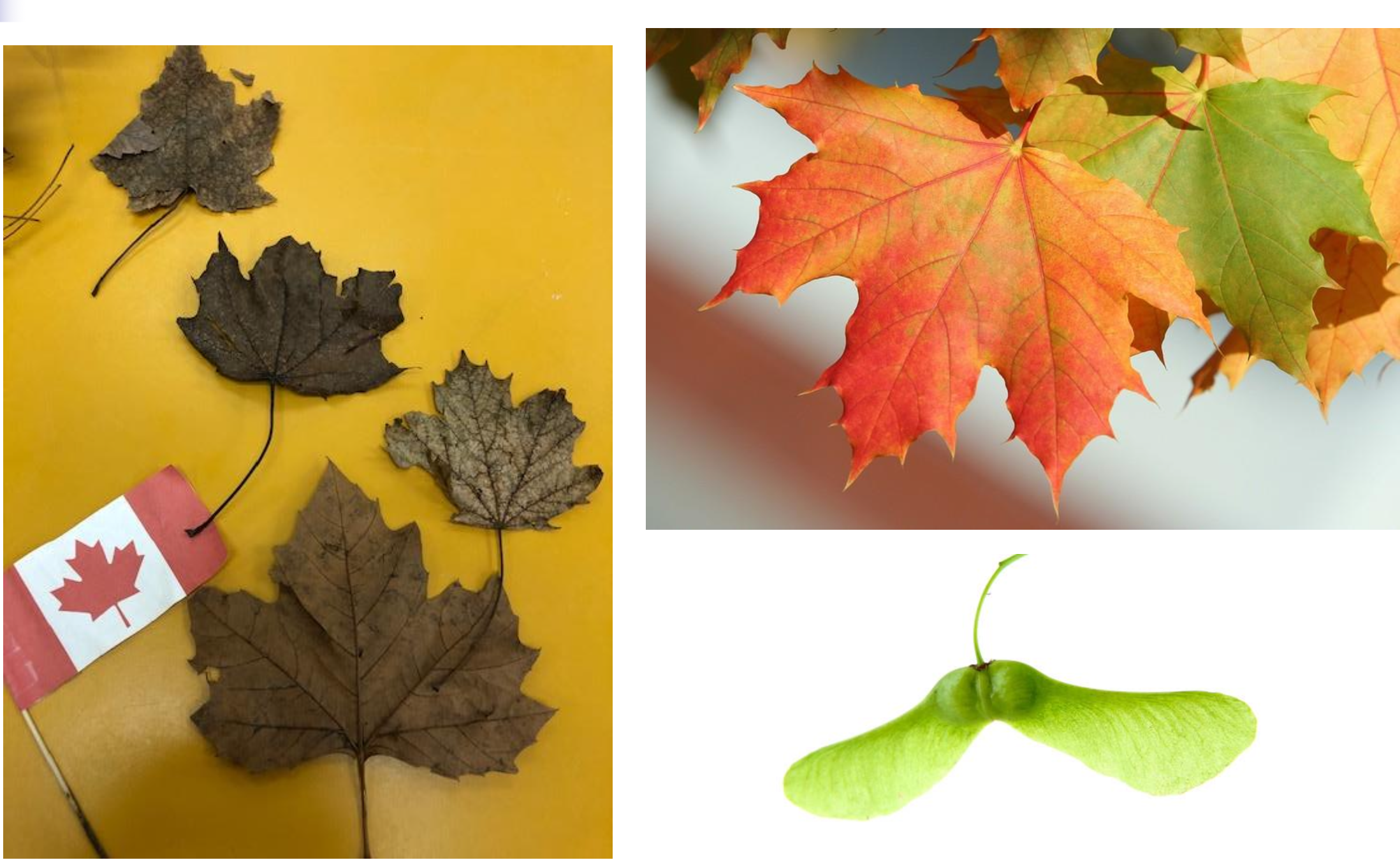
What is the toxic principle in Acer spp.?
Unknown - wilted or dried senescent leaves or bark often the culprit and suspected gallic acid, tannic acid, pyrogallol
True or False? Red maple Acer rubrum is the only species to cause toxicosis
False. Consider all Acer spp. species potentially a problem.
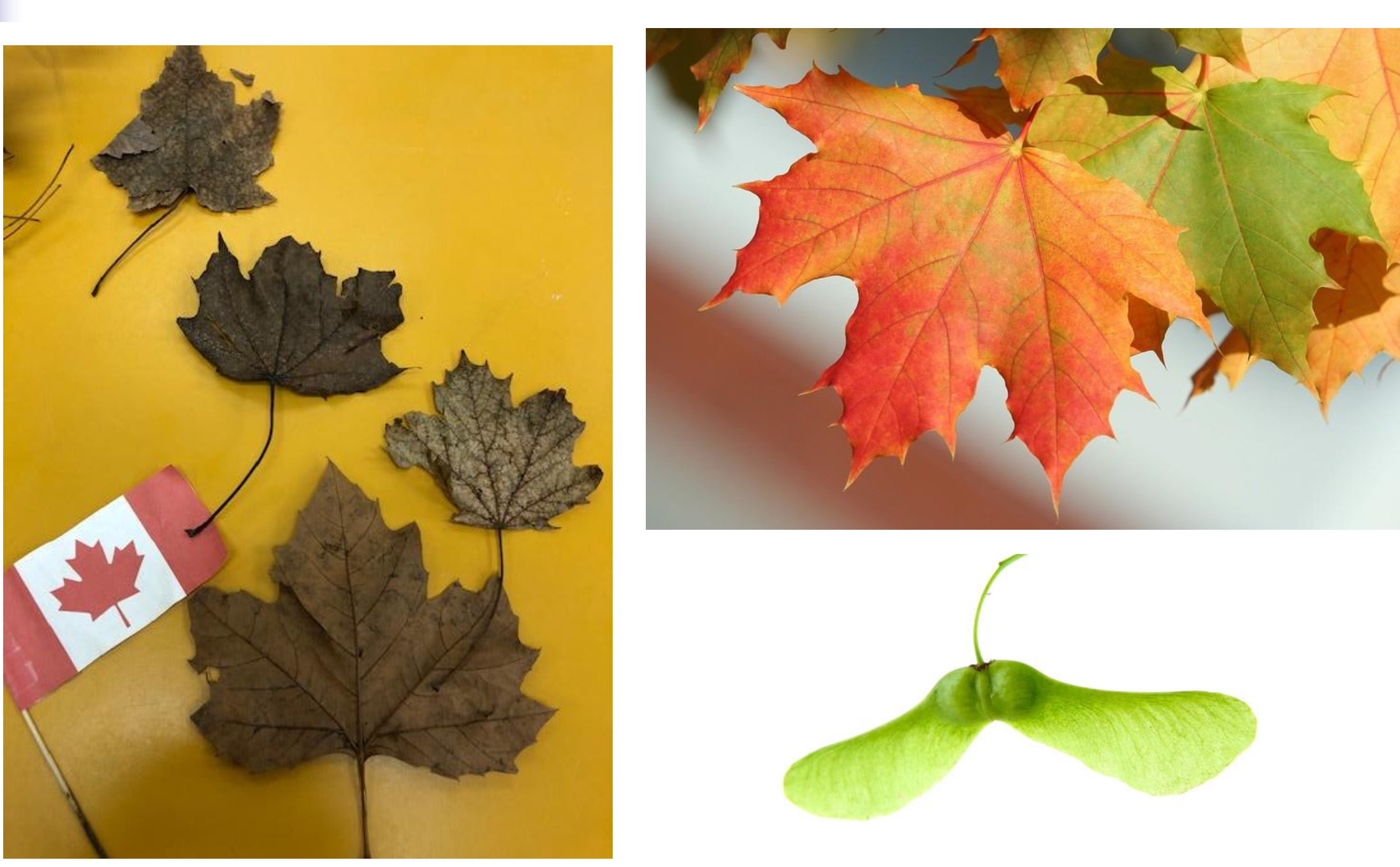
What species does Acer spp. affect?
equine (reported in zebra, donkey), report in 2 alpacas, other species potentially susceptible

What is the MoA of Acer spp.?
acute hemolytic anemia, metheomglobinemia, Heinz body formation
What clinical signs and clinical pathology do you see with Acer spp.?
within 24 hours: lethargy, anorexia, tachycardia, tachypnea, brown discoloration to blood, red tinted serum
anemia, methemoglobinemia, hemoglobinuric nephrosis

What is the treatment for Acer spp.?
same for most hemolytic anemias
What 2 Acer spp species is associated with Seasonal Pasture Myopathy (acute rhabdomyolysis) in equids?
Box elder (Acer negundo), Sycamore maple (Acer pseudoplatanus)
How do equids get Seasonal Pasture Myopathy?
ingesting tree fruit and seedlings of Box elder or sycamore maple, which contains hypoglycin A and methylenecyclopropyl-glycine which inhibits enzymes causing selective multifocal monophasic hyaline degeneration of type I muscle fibers
Cruciferae family
mustards! over 300 plants
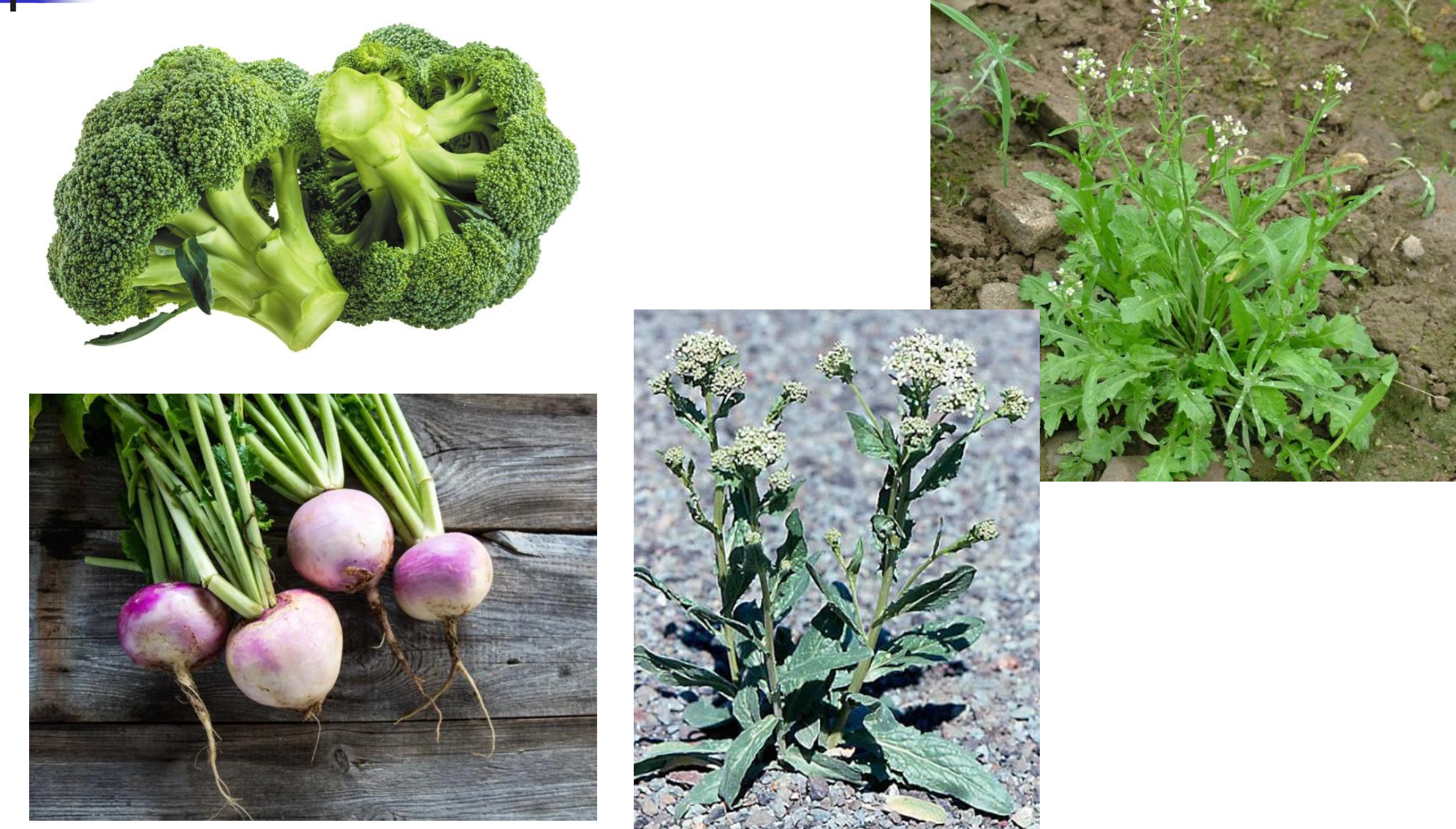
Animals have to eat ___ of Cruciferae to have problems.
A LOT
The toxic principles and MoA varies with __ and __ __ of cruciferae family.
plant, plant part
List the 6 toxic principles within the cruciferae family
goitrin and thiocyanate
thiaminase-like activity, high sulfur
S-methyl cysteine sulfoxide converted to dimethyl disulfide
equine dysmaturity syndrome
GI irritants
atypical pulmonary emphysema/edema (fog fever), nitrate accumulation
What does goitrin and thiocyante do?
interferes with thyroid hormone synthesis and iodine uptake leading to goiter
What does thiaminase like activity or high sulfur do?
causes polioencephalomalacia and secondary copper deficiencies
What does S-methyl cysteine sulfoxide converted to dimethyl disulfide do?
Hemolysis, Heinz body anemia, many others!!
What is Equine dysmaturity syndrome?
congenital hypothyroidism leading to prolonged gestation, hyperplastic thyroids though normal in size, incomplete ossification of carpal and tarsal bones, forelimb and hindlimb contracture, flexural and angular deformities, common digital extensor tendon ruptures, mandibular prognathism
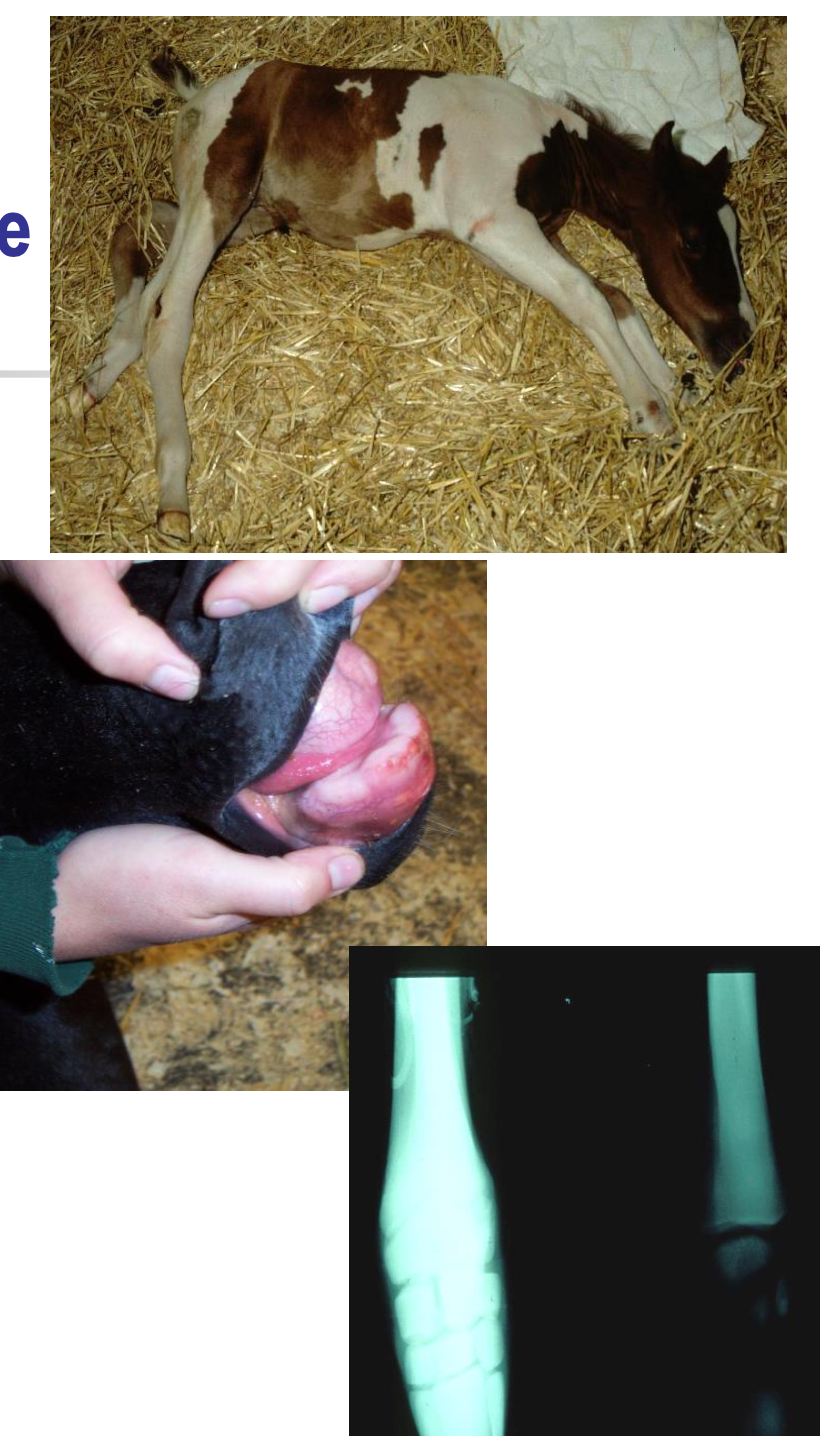
Grazing intake of Brassica should not be greater than __% for dairy cows, __% for beef cattle, and lambs can consume up to __%
33%, 70%, 100%
What clincial sign does GI irritants from cruciferae cause?
bloat
True or False? Cruciferae plants can cause BALD (brassica induced liver disesae), which can lead to primary photosensitivity (Type 1)
False. Cruciferae plants can cause BALD (brassica induced liver disease), which can lead to secondary photosensitivity (Type 3 due to reduction of phylloerythrin excretion, accounts for 68.5% of all photosensitivity cases)
What animals are affected by cruciferae?
All species susceptible, mostly seen reports in equids
Describe the clinical signs seen with cruciferae toxicity
enlarged thyroids, young born weak and die shortly after birth
lethargy, incoordination, muscle tremors, blindness, recumbency, convulsinos, death within 2-10 days with copper deficiency
jaundice, hemoglobinemia/uria, anemia, hemolysis, anorexia, feer, Heinz body formation
Describe the lesions seen with cruciferae toxicity
swollen pale liver, jaundice, dark/red brown kidneys, splenomegaly, hepatic and renal hemosiderosis and degeneration/necrosis
What are the treatment options for each toxic principle in cruciferae?
goiter → supplement with iodine
thiaminase like activity → thiamine hydrochloride, mannitol, dexamethason, Cu supplement
hemoslysis → symptomatic and supportive
-6. EDS, bloat, fog fever → symptomatic and supportive, methylene blue for nitrate problems
Melilotus spp.
sweet clover
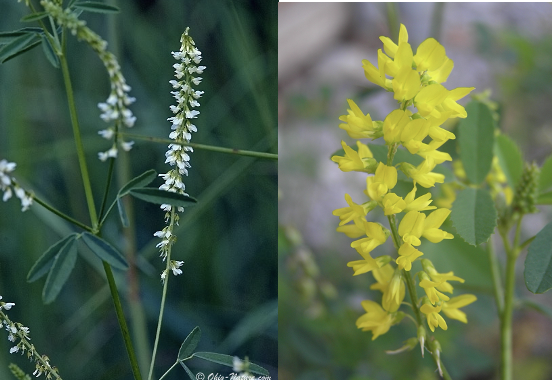
Melilotus spp. is primarily a __ problem and was aka __.
Historical, moldy sweet clover disease
What is the toxic principle of Melilotus spp?
Coumarin dimerized and oxidzed to dicoumarol during curing process if feed is put of wet, mold is responsible for this conversion
What is the MoA of Melilotus spp?
Dicoumarol interferes with vitamin K epoxide reductase, interferes with activation of clotting factors 2,7,9,10 resulting in bleeding disorders
What animals are affected by Melilotus spp?
primarily cattle
What clinical signs and clinical pathology do you see with Melilotus spp?
varies depending on where bleeding is occurring, anemia and prolonged clotting times
What lesions do you see with Melilotus spp?
generalized hemorrhage
What is the treatment for Melilotus spp?
supportive via vitamin K1, fluids, blood transfusions, alflalfa etc
Pteridium aquilinum
bracken fern
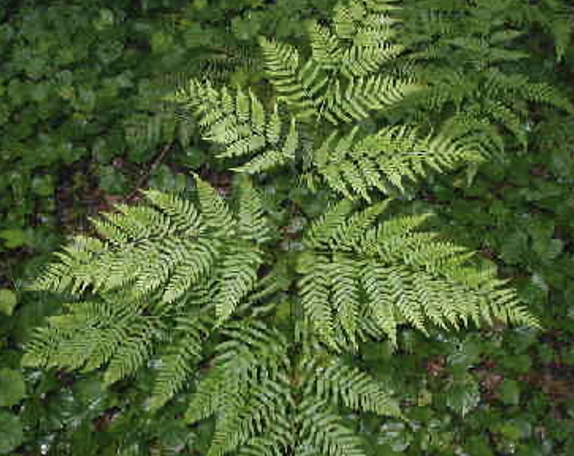
What is the toxic principle of Pteridium aquilinum?
ALL parts toxic
young plants (fronds, croziers) and rhizomes most toxic (green or dried), most toxicosis occur with contaminant of hay
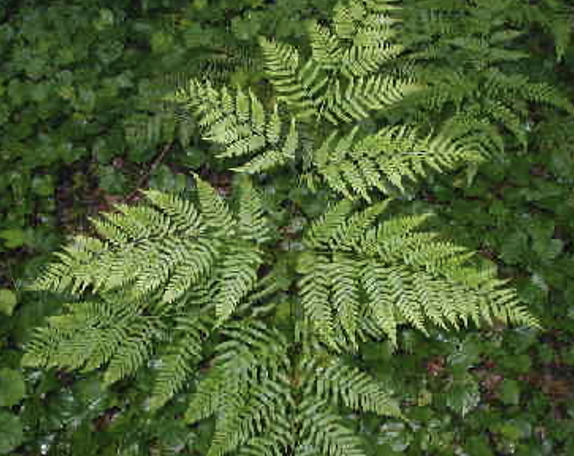
What animals does Pteridium aquilinum affect?
monogastrics (horses), ruminants (cattle, sheep)
In ___, a diet composed of __% of bracken fern for 3 or more weeks is associated with a __
monogastrics (horses), 20-25%, neurotoxicosis (type 1 thiaminase) or polioencephalomalacia-like disease
Ruminant diseases from Pteridium aquilinum is due to what?
ptaquiloside (water soluble)
In ___ , large amounts of braken fern ingested over several ___, leads to ____. This is most common in ___.
ruminants, weeks, bone marrow depression (affecting PLT, WBC, RBCs)
North America

Small daily long term ingestion of braken fern leads to ____ and other ___.
enzootic hematuria, neoplasms
Long term exposure of braken fern in sheep has led to ____.
retinal degeneration “bright blindness” glassy eyed appearance, dilated pupils
What clinical signs are seen in monogastrics vs ruminants vs sheep with Pteridium aquilinum?
monogastrics: polioencephalomalacia like disease (acute onset, weight loss, bradycardia, death in 2-10d)
ruminants: bone marrow depression leading to weakness, generalized hemorrhage
sheep: atrophy of outer nuclear layer and rod/cone layer
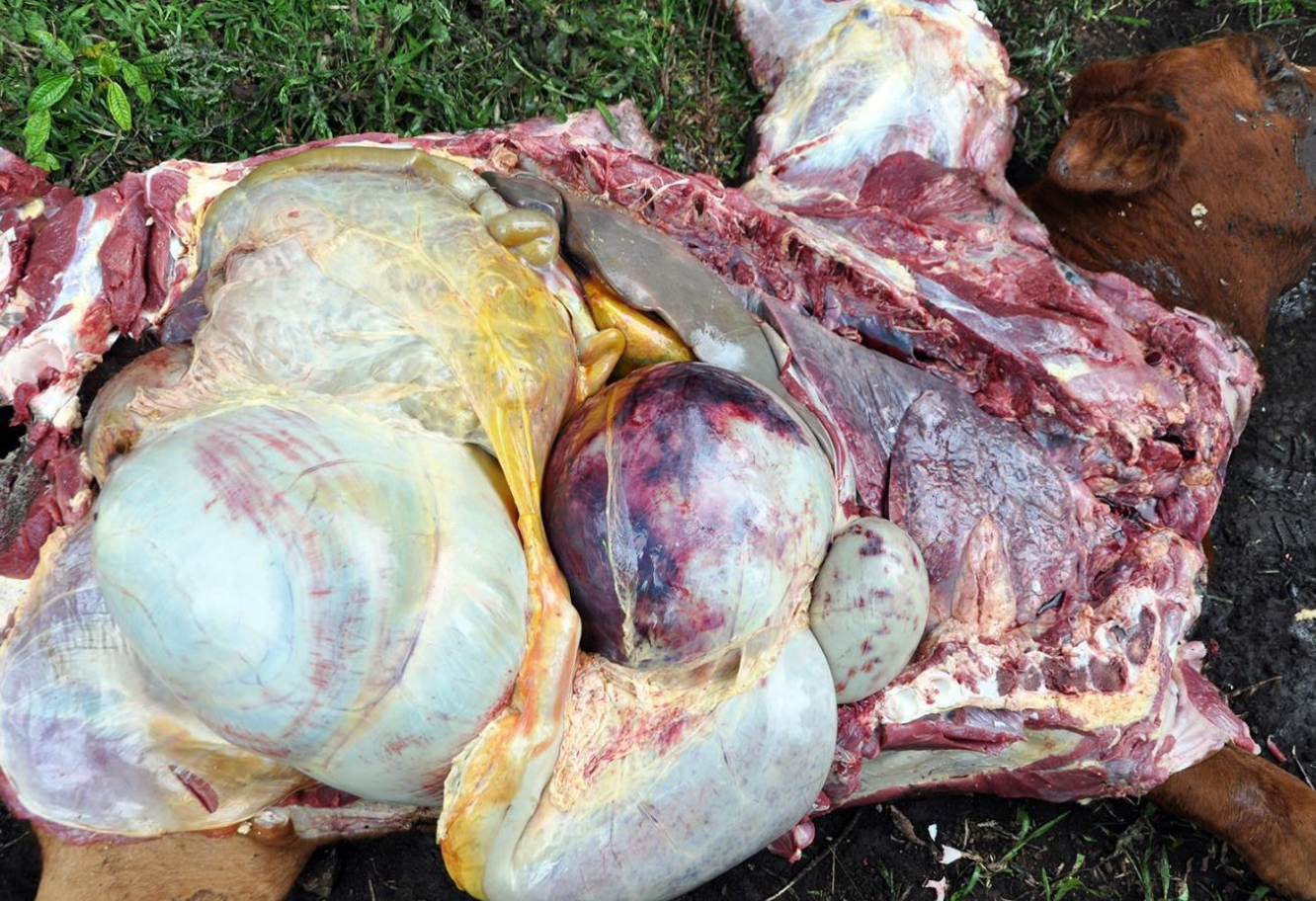
What is the treatment for Pteridium aquilinum?
thamine hydrochloride in monogastrics,
abx and supportive care in ruminants